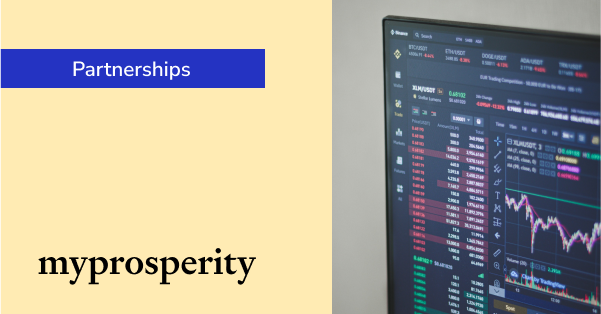What is the Foreign Investment Funds (FIF) Tax in New Zealand?
Disclaimer: This article is for informational purposes only and does not constitute a product recommendation, or taxation or financial advice and should not be relied upon as such. Please consult with your financial adviser or accountant to obtain the correct advice for your situation.
The foreign investment fund (FIF) taxation regime in New Zealand is broadly designed to prevent taxpayers from using investments in offshore entities to avoid or defer their tax obligations. These rules apply to offshore investments held by New Zealand-resident taxpayers and target overseas companies who do not pay dividends.
The tax implications of the FIF regime mean it’s necessary to understand which investments are considered foreign investment funds under the rules, how to calculate FIF income and how it impacts portfolio returns.
Why does NZ have a FIF regime?
In order to diversify their portfolios beyond the opportunities available domestically, many New Zealanders invest in overseas companies or unit trusts.The FIF rules impose a tax on the underlying income that is derived from such investments, both to ensure a fair playing field and to encourage investment in NZ-domiciled companies.
To illustrate how common it is for New Zealand-based investors to invest internationally, 52% of all Sharesight users in NZ own direct holdings in markets outside New Zealand. This increases to almost 90% of New Zealand-based investors on Sharesight paid plans.
What is a FIF?
New Zealand Inland Revenue Department (IRD) defines a FIF as:
- a foreign company
- a foreign unit trust
- a foreign superannuation scheme (prior to 1 April 2014)
- a FIF superannuation interest (from 1 April 2014)
- an insurer under a life insurance policy (and the policy is not offered or entered into in New Zealand).
While the FIF rules serve as an incentive to invest locally, they largely exempt small foreign investments of less than NZ$50,000.These were first introduced as part of a tax reform package on 1 April 2007 to remove inconsistencies in the old rules. The rules were amended in 2014.
There are also different rules for holdings of 10% or more that may apply. A FIF does not include term deposits, bonds, debentures, money lent, foreign employment, pensions, qualifying foreign private annuity or rental investments.
How is FIF income calculated?
The rules for FIF were at least in part defined by New Zealand legislation before 2007 but reform aimed to simplify the process by introducing the Fair Dividend Rate Method (FDR) and Cost Method (CM). This means that since July 2011, investors need to consider the following five calculation methods depending on their type of foreign investment and information they have available. These are:
• fair dividend rate (FDR)
• comparative value (CV)
• cost method (CM)
• deemed rate of return (DRR)
• attributable FIF income method.
Retail investors tend to choose the FDR method as this ensures a flat tax is paid of 5% on the share portfolio’s opening market value each year. The excess return is effectively tax free and generally only shares held at the start of an income year are taken into account, with purchases and sales of shares during the year excluded. However, shares that are purchased and sold in the same income year are taxed on the lower of 5% of their cost or the actual gains made on these "quick sales" - the term for a sale of shares in a company are bought and sold within the same income year.
Investors can also use the Comparative Value (CV) method which determines taxable FIF income from the change in value of the investment each tax year, with an adjustment for capital gains and dividends In some cases it is possible to switch between FDR and CV each year to achieve the best tax outcome.
The claiming of FIF losses has its own set of complexities and is best discussed with a tax agent or financial adviser.
Exemptions to FIF rules in NZ
A full list of exemptions to the FIF rules is contained in the New Zealand Income Tax Act 2007 and these are best discussed with your tax agent or financial adviser as general tax rules will still apply. However, the key exemptions for New Zealand residents to be aware of are:
-
the total amount of investment of a natural person or eligible trust doesn't exceed the NZ$50,000 threshold at any time in the year. This cut off is intended to reduce compliance costs for investors with relatively small amounts invested offshore.
-
Australian listed shares are generally exempt from the FIF rules and are taxed in the same way as NZ investments. This means dividends are taxable when received and capital gains are tax free. However, the investment must be listed on the Australian Securities Exchange (ASX). To help investors decide whether or not an Australian company satisfies the exemption criteria, New Zealand Inland Revenue have listed companies that qualify for the exemption from the FIF rules on its website.
-
Where an investor’s interests are 10% or more of the direct income interest, the FIF rules are suspended. For example, if a New Zealand resident owns more than 10% of the shares in a foreign company then, to encourage foreign ownership, the tax does not apply.
-
Land investment outside of New Zealand does not fall under FIF as the rules deal mainly with shares. But, like any of the above investments which are exempt from FIF, these may fall under other existing tax rules, where investors are generally taxed on dividends rather than capital gains.
For more detail on these points, click here.
FIF superannuation interests rules
From 1 April 2014, unless they are a "FIF superannuation interest" investments in foreign superannuation schemes were no longer taxed under the FIF rules. In this context, a FIF superannuation interest is defined as:
· an interest in a foreign superannuation scheme acquired while the investor was a resident in New Zealand, or treated as a New Zealand tax resident under a double tax agreement, or
· an interest in a foreign superannuation scheme where the investor complied with the FIF rules for an income year ending before 1 April 2014, returned that income in their income tax returns filed before 20 May 2013 and continue to return the income on that interest in succeeding years.
Investments in foreign superannuation schemes that is not considered a "FIF superannuation interest" are taxed under different rules.
FIF tax issues to avoid
There are various exemptions from the FIF rules and common pitfalls that can be avoided:
· Transitional residents should ensure they are not taxed on their foreign investment income during their transitional period. This temporary tax exemption on foreign investment income expires after 48 months. All other residents are required to return dividends as received from foreign investments that are exempt from the FIF regime, such as Australian shares. Dividends received from investments that are subject to the foreign investment fund regime must not be returned when received as the income is calculated under the FIF rules.
· From 1 April 2014, lump sum withdrawals or transfers from foreign superannuation funds are generally excluded from the FIF rules and will be taxed at time of withdrawal or transfer.
· Generally pension payments are taxable in New Zealand. However, some offshore social security pensions are not required to be returned in New Zealand.
· Some investors are able to calculate their FIF income under the FDR or CV method and they can return annually the lesser of the two. Any losses must be reduced to nil. However, these losses must not be included as part of overseas income.
· For some investments, New Zealanders are not allowed to use the FDR method. These investments are usually called FDR prohibited or CV enforced investments. In such cases income is calculated under the comparative value method for as long as the person owns the investments.
NZ investors can calculate FIF income using Sharesight
The good news is that investors on a Sharesight NZ Expert or Sharesight NZ's professional plan plan can run their own FIF tax report in just a few clicks using both the FDR and CV method. Read our guide on using the NZ FIF report to see how easy it is.

Sharesight makes tax time easy for NZ investors
By compiling all your portfolio data in one place, Sharesight eliminates the paper-chase and headaches normally associated with performance and tax reporting.
To get started, simply sign up for a FREE Sharesight account to get started, then try Sharesight's:
-
Traders Tax Report – Calculates taxable gains for individuals who hold shares on revenue account (i.e. they are classified as traders by the IRD)
-
Diversity Report – Shows how your portfolio is diversified across various groupings, at a chosen point in time
-
Benchmarking – enables you to select any ETF in the Sharesight database to compare against a holding or your overall portfolio
-
Contribution Analysis Report – Explains the drivers behind your portfolio’s performance, be they stock selection, asset allocation, or exposure to certain countries, sectors, or industries
Plus, if you upgrade your Sharesight subscription may be tax deductible.† Sign up today to get started.
†If you are a New Zealand tax resident and you derive income from the sharemarket, your Sharesight subscription may be tax deductible. Check with your accountant for details.
MORE INFO
- Sharesight Help – FIF Report
FURTHER READING

Is your client data at risk? 5 questions to ask your tech provider
Protect client data with these five essential cybersecurity questions every financial adviser should ask their technology providers.

Get the full Sharesight experience with the app and web platform
Learn how to get the most out of Sharesight by using the app and web platform together for performance tracking, analysis, reporting and tax planning.

See clients' full wealth picture with Sharesight and myprosperity
Connect Sharesight and myprosperity to see clients’ full financial picture, streamline management, and deliver more insightful advice.